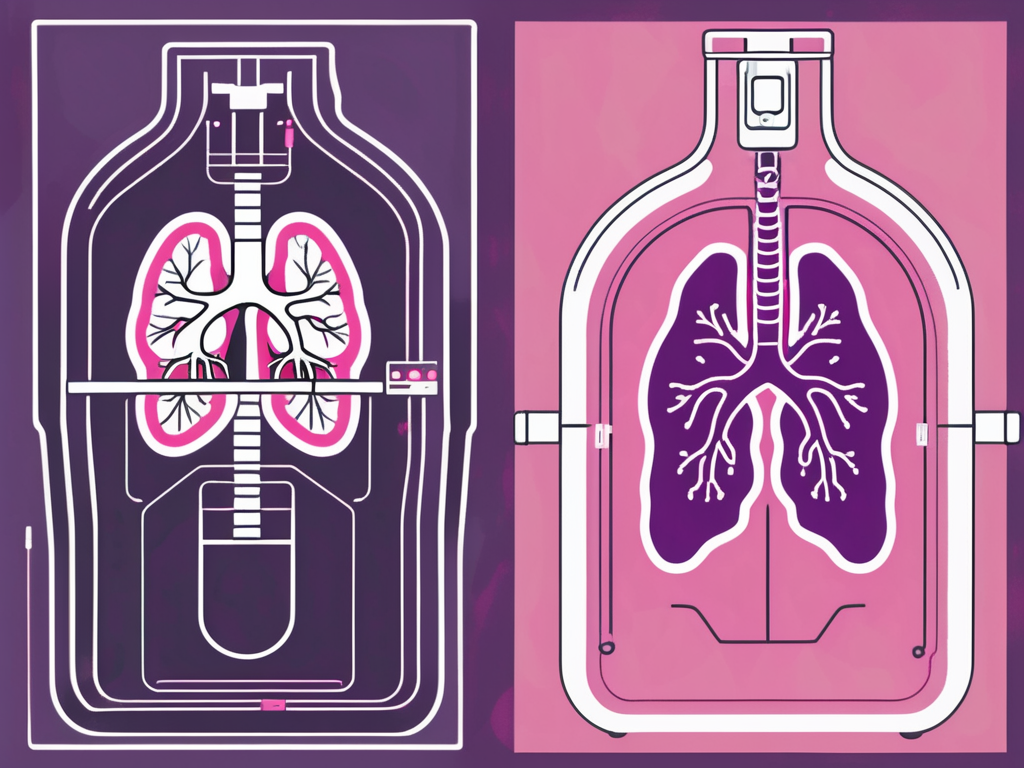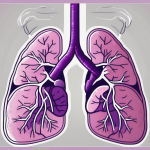Low-Dose Computed Tomography (CT) Lung Cancer Screening (CTLS) stands as a pivotal advancement in the early detection of lung cancer, significantly enhancing the likelihood of successful treatment. This article delves into the critical role of CTLS in identifying lung cancer in its nascent stages, thereby substantially improving patient outcomes. Highlighting the technology’s precision, it contrasts the benefits of early detection against the challenges of late-stage diagnosis. Through CTLS, healthcare providers can uncover lung abnormalities with minimal radiation exposure, offering a proactive defense for those at high risk due to factors like age and smoking history. Despite potential false positives or negatives, the emphasis is on the procedure’s overall merit in saving lives and guiding treatment strategies. The article underscores preparation, follow-up care, and the importance of a healthy lifestyle post-screening, advocating for CTLS as a cornerstone in combating lung cancer.
In the battle against lung cancer, early detection is key. The sooner it is detected, the better the chances of successful treatment. That’s why low-dose computed tomography (CT) lung cancer screening (CTLS) has become an invaluable tool for healthcare providers. This non-invasive procedure allows doctors to detect lung cancer at an early stage, when it is most treatable. Today, we will delve into the importance of early detection and explore the ins and outs of CTLS.
The Importance of Early Detection
Lung cancer is a formidable opponent, often showing no symptoms until it has reached an advanced stage. By then, treatment options become limited and the chances of survival decrease significantly. However, with CTLS, we have the power to change this narrative. By detecting lung cancer in its earliest stages, when it is still localized and hasn’t spread to other parts of the body, patients have a significantly higher chance of successful treatment and long-term survival.
Early detection not only saves lives but also improves the quality of life for those affected. With timely intervention, patients can avoid more aggressive forms of treatment, such as surgery or chemotherapy, and opt for less invasive procedures. As we delve deeper into the world of CTLS, you’ll come to understand just how powerful this screening tool can be in the fight against lung cancer.
Let’s take a closer look at the impact of early detection on the lives of lung cancer patients. Imagine a scenario where a middle-aged man named John, who has been a heavy smoker for over 20 years, undergoes a routine CTLS screening. The scan reveals a small nodule in his lung, which is a potential sign of early-stage lung cancer. Thanks to the early detection, John’s doctor can immediately develop a personalized treatment plan.
John’s doctor recommends a minimally invasive procedure called radiofrequency ablation (RFA) to remove the tumor. RFA uses heat generated by radio waves to destroy cancer cells, while preserving the healthy lung tissue. This procedure has a shorter recovery time and fewer complications compared to traditional surgery, allowing John to resume his normal activities sooner.
In addition to the physical benefits, early detection also provides peace of mind for patients and their families. Knowing that the cancer has been caught early and that there are treatment options available can alleviate anxiety and fear. It allows patients to approach their diagnosis with a sense of hope and optimism, knowing that they have a fighting chance against the disease.
Furthermore, early detection enables healthcare providers to gather valuable data and insights about lung cancer. By studying a large pool of patients who were diagnosed at an early stage, researchers can identify common risk factors, genetic mutations, and other factors that contribute to the development and progression of the disease. This knowledge can then be used to refine screening guidelines, develop targeted therapies, and ultimately improve outcomes for future patients.
As we continue to advance in the field of CTLS, the potential for early detection becomes even more promising. Researchers are exploring new techniques, such as liquid biopsy, which involves analyzing a patient’s blood sample for circulating tumor cells or fragments of DNA shed by cancer cells. This non-invasive method could revolutionize the way we detect and monitor lung cancer, making it even easier to catch the disease in its earliest stages.
In conclusion, early detection through CTLS is a game-changer in the fight against lung cancer. It not only increases the chances of successful treatment and long-term survival but also improves the overall quality of life for patients. By embracing this powerful screening tool, we can make significant strides in reducing the burden of lung cancer and bringing hope to those affected by this devastating disease.
Understanding CTLS and its Benefits
CTLS is a type of computed tomography scan specifically designed to screen for lung cancer. It utilizes low-dose radiation to create detailed images of the lungs, allowing healthcare providers to detect even the smallest abnormalities. These images provide valuable information about the size, shape, and location of any growths or nodules that may be present in the lungs.
One of the key benefits of CTLS is its ability to detect lung cancer at an early stage, long before symptoms manifest. This means that treatment can begin promptly, improving the prognosis for patients and potentially saving lives. Moreover, CTLS has been shown to reduce lung cancer mortality rates by up to 20%, making it a vital tool in the fight against this devastating disease.
Who Should Consider CTLS?
CTLS is recommended for individuals who meet specific criteria set forth by medical guidelines. If you are between the ages of 55 and 80 and have a significant smoking history, you may be a candidate for CTLS. A significant smoking history is typically defined as having a 30 pack-year history, which means smoking one pack of cigarettes per day for 30 years or two packs per day for 15 years.
Additionally, it’s important to note that individuals who have quit smoking within the past 15 years also fall within the recommended category for CTLS screening. If you meet these criteria, don’t hesitate to speak with your healthcare provider about the potential benefits of CTLS in your case.
The Science Behind Low-Dose CT Scans
Low-dose CT scans, as the name suggests, use a lower amount of radiation compared to standard CT scans. This minimal radiation exposure greatly reduces the risk associated with the procedure. In fact, the radiation dose from a low-dose CT scan is comparable to the exposure one would receive during a routine chest X-ray.
The technology behind low-dose CT scans has advanced significantly in recent years, allowing for clearer and more precise images. These high-resolution images enable healthcare providers to identify even the tiniest abnormalities in the lungs, ensuring better accuracy and detection rates. With the help of this cutting-edge technology, we are able to catch lung cancer at its earliest stages, when it is most curable.
Risks and Limitations of CTLS
While CTLS offers numerous benefits, it’s important to be aware of its potential risks and limitations. One of the main concerns with CTLS is the possibility of false positives. This means that the scan may detect abnormalities that are not actually cancerous, leading to unnecessary worry and further testing.
Additionally, CTLS may not always detect small, slow-growing cancers, which can result in false negatives. It’s also essential to keep in mind the radiation exposure associated with the procedure, although this is significantly lower than that of a standard CT scan. Your healthcare provider will carefully weigh the benefits and risks specific to your situation before recommending CTLS.
How to Prepare for a CTLS Screening
Preparing for a CTLS screening is straightforward and generally requires minimal effort. You may be instructed to refrain from eating for a few hours before the procedure, to ensure accurate imaging of the lungs. It is also important to avoid wearing any clothing with metal components, as these can interfere with the scan.
As always, it is crucial to inform your healthcare provider of any existing medical conditions, allergies, or medications you may be taking. They will guide you through the preparation process and address any concerns you may have. Remember, knowledge is power, and being well-prepared will help ensure a smooth and successful CTLS screening.
Interpreting CTLS Results: What to Expect
After your CTLS screening, you may experience a mix of emotions as you await the results. It’s natural to feel anxious or worried during this time, but it’s essential to keep in mind that abnormal findings do not necessarily indicate lung cancer. In fact, the majority of lung nodules detected via CTLS are benign, meaning they are not cancerous.
If the CTLS results show any abnormalities, your healthcare provider will discuss the next steps with you. This may involve additional imaging tests, such as a follow-up CT scan or a lung biopsy, to determine the nature of the abnormalities. Remember, early detection offers the greatest chances for successful treatment, and your healthcare team is there to guide you through the process and provide support every step of the way.
Follow-Up Care and Monitoring after CTLS
Following a CTLS screening, regular monitoring becomes crucial to ensure any changes in the lungs are promptly detected and addressed. Your healthcare provider will determine the appropriate follow-up schedule based on your individual circumstances. This may involve periodic CT scans, X-rays, or clinical evaluations.
Additionally, it is important to maintain a healthy lifestyle to reduce your risk of developing lung cancer. This includes quitting smoking if you are a smoker, avoiding secondhand smoke, and minimizing exposure to environmental toxins. Taking these proactive steps will go a long way in safeguarding your lung health and overall well-being.
Remember, CTLS is a powerful tool that can save lives. By opting for regular screenings and following the recommendations of your healthcare provider, you are taking a proactive approach to your health and increasing your chances of achieving a brighter, cancer-free future.


